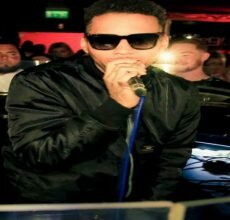‘Normality’ has returned for the 1.7 million Palestinians living under siege in the Gaza Strip. Israeli military drones fly overhead, and the Israeli military blockade, restricting entry by sea, air and land to the region for both goods and people continues. This morning a Palestinian farmer was shot dead on farmland near the border, by Israeli forces.
However, during the previous week, over 160 people living there were killed by an Israeli military operation ‘Pillar of Cloud’ which saw F16 fighter jets, unmanned drones, and warships bombing the Gaza Strip, both day and night. The dead included 42 children, 11 women and 18 elderly. During the same period, rockets fired by Palestinian resistance groups also killed five Israeli’s.
Throughout this period, across the world, demonstrations were held condemning both the escalating attacks and the ongoing Israeli occupation of Palestine.
In London on Saturday the 17th of November in London, well over a thousand people travelled to the Israeli embassy in High Street Kensington to attend one such emergency demonstration. People from various walks of life, all ages, and many different nationalities and religions, angered by the escalating Israeli military assault on the Palestinian population of the Gaza Strip, stood united in solidarity with the Palestinian people. Throughout the afternoon, they passionately chanted, sang songs, listened to speeches, and discussed the situation and the possible solutions. Young people led much of these discussions and chants, and it was a challenge to the often stereotypical and demeaning portrayal of youth in this country as dis-interested ‘hoodies’.
Many people also expressed their anger not only at the Israeli state but also at the British governments continuing support for Israel, and it’s failure to condemn the bombing, as well as the biased sympathy regarding the impact of the situation on Israeli citizens, expressed by politicians such as William Hague. There was further frustration at the misrepresentation of the events, specifically the timeline leading to the escalation of violence, that both politicians and media channels such as the BBC have been accused of ignoring or selectively mentioning. Whilst rocket fire from Palestinian resistance fighters was widely mentioned as the cause of these events, this escalation had actually begun with the shooting of a twelve-year-old Palestinian boy by Israeli soldiers who had invaded Gaza. Palestinian resistance fighters subsequently injured five Israeli soldiers. Israel then shelled the Gaza strip, killing two more Palestinian teenagers who were playing football, and two other Palestinian civilians attending a funeral.
For those that don’t know, the land referred to by many as Palestine is situated where the Middle East meets the Mediterranean Sea. Below Lebanon and Syria, on the northeast border of Egypt, and to the west of Jordan. Within this land, the state of Israel was created in 1948, and it now separates the areas defined by the United Nations as the ‘Occupied Palestinian Territories’: Gaza and the West Bank.


The situation there is a complex one, linked partly to the creation of the state of Israel in 1948 – when over 700,000 Palestinians either fled or were expelled from their homes, becoming refugees – followed by the Israeli military occupation of the West Bank and Gaza Strip in 1967. An overwhelming reality that Palestinians have and still do face, are evolving multi-faceted forms of oppression, collective punishment, and discriminatory Israeli state policies. Some compare such policies to those implemented during the Apartheid era in South Africa – hence Nelson Mandela and Desmond Tutu’s support for the Palestinian people. As seen in Gaza, ongoing disproportionate violence has also been perpetuated by a highly sophisticated Israeli military, air force and navy – part funded by US military aid – in comparison to the actions of armed resistance groups affiliated to Palestinian political factions. Such prolonged militarised attacks on the population of the Gaza Strip are nothing new. In 2009 Israel’s ‘Operation Cast Lead’ that lasted for three weeks, killed 1,400 Palestinians, with 13 Israeli’s killed (4 from friendly fire).
In the West Bank over two million Palestinians live under Israeli military control. Here as in Gaza, Palestinian’s Human rights under international law are continuously violated. Their homes are destroyed, farmland confiscated, children as young as twelve imprisoned without trial. Access to clean water services restricted. Villages segregated, and freedom of movement restricted by military checkpoints. The Israeli government also continues to fund the construction of hundreds of illegal Jewish settlements across the West Bank, encouraging – with financial incentives – Jewish people to migrate from the US and Europe, maintaining and intensifying the occupation. Furthermore, unarmed weekly protests against Israeli policies are met with live ammunition and tear gas, with 2 Palestinians being shot dead this week alone.
The people protesting in London, and across the world, emphasise the demands of the Palestinian people, which include an end to the Israeli occupation, and an equal respect of their rights – including those of Palestinian refugees who have been forced to flee during previous conflicts. Sadly, whilst another ceasefire has now been agreed, in such an ongoing and disproportionately oppressive situation, and until such rights and freedoms are respected and attained, confrontation, violence and resistance may arguably be inevitable.
Words and Images provided by ‘Wonderwoman’ & Photographer Saira Awan
Follow her on TWITTER@saiphotography
I| By Saira Awan
















